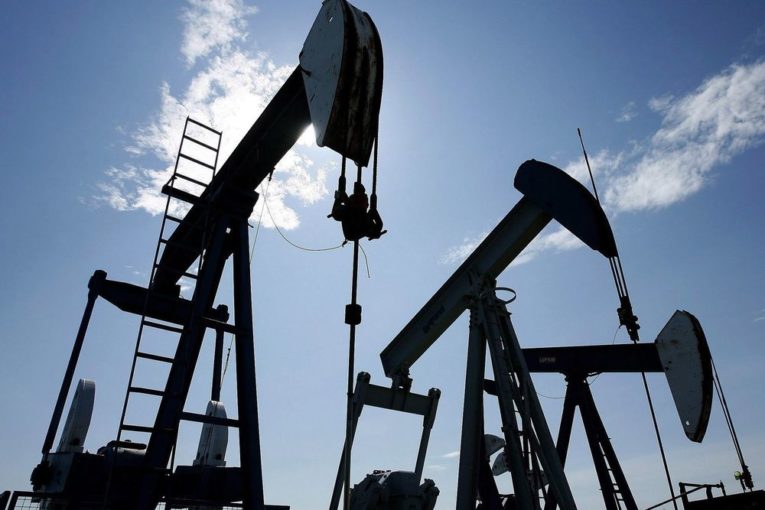
As the price discount on Canadian oil deepens, so too does the pressure on the Alberta government’s finances.
During a trip to Calgary and Edmonton this week for a series of meetings, officials with credit rating agency DBRS Ltd. laid out the stark financial issues facing this resource-rich province.
“There is a large budget gap, the economy still faces challenges and there’s really no real structural adjustments being contemplated,” Paul LeBane, DBRS vice-president of public finance, said in an interview.
“As a result, it leaves the province exposed to some downside risk.”
Some of the risk stems from today’s pipeline bottleneck and its impact on Canadian oil prices.
Earlier this year, Finance Minister Joe Ceci unveiled a plan to return to a balanced budget by 2023-24, projecting the province’s $8.8-billion deficit this fiscal year will turn into a slight surplus.
Since the spring, the economy has continued to grow. Benchmark U.S. oil prices are $10-a-barrel higher than the US$59 forecast in the budget.
The projected deficit this fiscal year has since fallen by $1 billion, another welcome sign.
Yet, the strategy is also based upon getting new pipelines built.
It forecast the price differential between West Texas Intermediate (WTI) and Western Canadian Select (WCS) heavy oil averaging $22.35 a barrel this year, and staying in the $18-to-$22 range until the books are balanced.
On this front, the outlook is not so constructive.
The price difference between WTI and WCS sat near $50 a barrel Thursday due to lack of pipeline capacity and refinery maintenance issues in the United States.
These short-term fluctuations could be corrected in the coming months, but the risk of volatility remains.
While Enbridge’s Line 3 replacement project is expected to be completed later next year, it’s uncertain when the stalled Trans Mountain expansion project and TransCanada’s Keystone XL pipeline will be built.
According to the budget, two new pipelines would increase royalties for the government by up to $10.5 billion between 2018 and 2023.
Every $1-a-barrel decrease in the differential over the course of the year knocks $210 million out of provincial revenues; every $1-a-barrel increase in U.S. benchmark oil prices is worth an extra $265 million.
“Essentially, Alberta’s economy is going through a fundamental change with lower commodity prices. And without market access, we will never get back to where we were in 2014 at this rate,” LeBane added.
“As a result, this budget deficit is going to linger for some time. We really aren’t seeing any meaningful actions on the part of government to close that gap.”
DBRS downgraded Alberta’s credit rating last November to AA with a negative trend.
LeBane pointed out the Notley government is taking efforts to slow the rise in spending and has struck some favourable deals with labour unions to freeze public-sector wages.
But he doesn’t see the balanced budget plan as being “particularly credible.”
“Alberta has a structural deficit and they need more meaningful action to close that,” he said.
For many financial observers, this is the crux of Alberta’s fiscal predicament.
The province has had a structural deficit for years. Eventually, this must be addressed and increased volatility from the oil price discount only makes the problem more difficult to fix.
A report last month by the Parliamentary Budget Officer found under current government policies, Alberta’s net debt as a percentage of GDP is the lowest in the country at 1.6 per cent.
But it projects that figure expanding to 43.6 per cent by 2042 and, if the trajectory isn’t changed, hitting 100 per cent in five decades, according to the PBO.
Now, it doesn’t mean Alberta is about to plunge into the deficit abyss. It does highlight the need for some serious thought about how to get off the treadmill.
University of Calgary economist Ron Kneebone, who recently published a study on 50 years of Alberta government budgeting, said the issue through the decades has largely remained the same: over-reliance on fickle oil and gas revenues by governments.
Kneebone’s report found it was only in the mid-1990s under Ralph Klein — a period punctuated by dramatic spending cuts — the province balanced spending with its non-resource revenue.
Getting off the energy roller-coaster will require Alberta generating additional revenue, cutting spending, or a combination of the two approaches.
The widening price discount for oil only increases the complexity of the task.
“They are slaves to whatever that price differential is,” he said Friday. “It’s just absolutely killing the budget and killing their fiscal plan.”
Kneebone estimates the long-term gap between spending and non-resource revenue is around $4 billion to $5 billion annually.
Closing the hole by cutting spending or raising taxes will take an iron will and political fortitude. It’s a debate that needs to take place during next year’s election campaign.
Ceci wasn’t made available for an interview Friday, but his spokesman said the government remains on track to balance the books in 2023.
“The differential is punishing for Albertans and underscores the need to get a pipeline to tidewater,” said the statement from Mike Brown.
United Conservative Party MLA Drew Barnes said it’s clear the Trans Mountain project is “seriously wounded” and the provincial government must get spending under control.
“Without cutting front-line workers and without cutting front-line services, we need to look everywhere we can to get better value for our dollars,” Barnes said.
In reality, this problem is not about partisan politics, it’s about basic accounting.
The government can’t change commodity prices or set interest rates. It can do something about spending or setting taxes.
Some will look at today’s pipeline woes and oil-price discount as a short-term crisis. For Alberta politicians, it should be a call to action.
Chris Varcoe is a Calgary Herald columnist.
You can read more of the news on source
